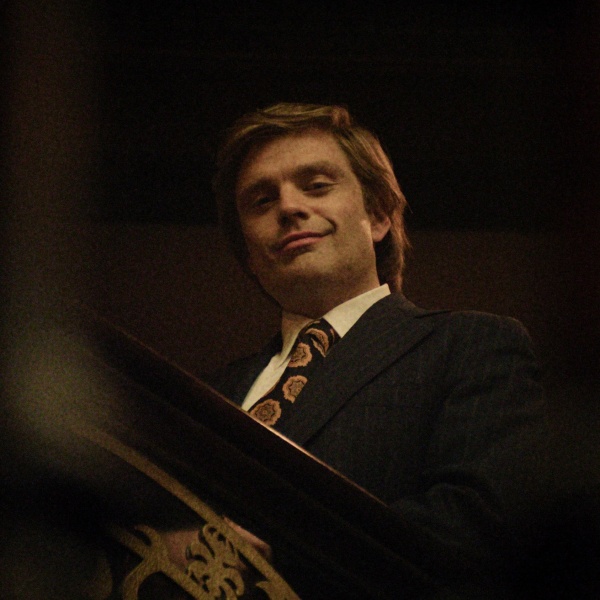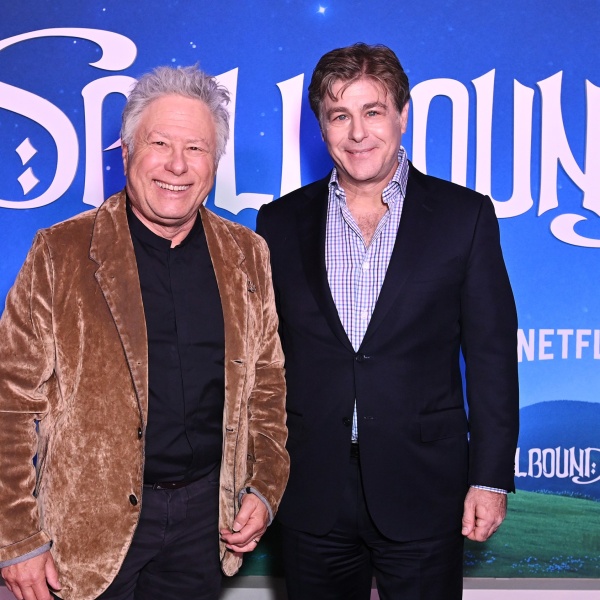
The latest program running at BAMcinematek offers up all eight of Akira Kurosawa’s lauded “Samurai Films.” We took on the first half of the retrospective last week; in Part 2, we look at the films that will be playing at BAM between today and Nov. 21st, the last leg of this very special program. Below you’ll find a quartet of some of the most influential films in Japanese history.
“The Hidden Fortress” (1958)
No one’s denying that each film in this retrospective is a classic; its reputation and its influence precedes it. But that shouldn’t preclude us from being as critical of these canonized works as we would any release. And this writer is about to be very critical of a beloved classic. Arguably Kurosawa’s most accessible film, “The Hidden Fortress” just seems a good deal less deserving of its honors than his more thematically and structurally sound efforts. That said, the level of artistry in Kurosawa’s composition is unassailable: the plumes of smoke pouring from high mountaintops, the steep ridges, bubbling lagoons, and woods thick with winding, sinewy branches all stoke an atmosphere of peril, and they’re rendered in the widescreen cinematography of “Tohoscope” (the first of many films to be shot in this format by Kurosawa). But muscular images can only carry a bloated epic so far, and here’s an arthouse film which, dare it be said, was actually one-upped by its mainstream redux: George Lucas’s franchise-starter “Star Wars” is a sturdier take on strikingly similar material, and a better balance of whimsy and excitement. For one thing, Lucas shifts focus from the bickering peasants of Kurosawa’s film to more well-rounded characters. We lose the predominant theme of greed (Kurosawa’s peasants repeatedly find themselves in trouble due to their efforts to steal a fortune in gold), but we get out from under the tedium that comes from following two gratingly one-note characters for 139 minutes. With the exception of the gruff, benevolent general Toshiro Mifune plays (the antecedent of Luke Sykwalker and Hans Solo), it’s tough to care about any of the characters in “The Hidden Fortress,” not because they’re shrill but because they never transcend their archetypes. This failing, compounded by serious pacing problems, make it difficult to rally behind this one. Even praising the action scenes (“well-staged and tense…”), it’s hard not to add the caveat “…but he’s done better.” [C+]
Sat, Nov 6 at 3, 6, 9pm
“Yojimbo” (1961) & “Sanjuro” (1962)
This well-regarded diptych is built around Toshiro Mifune’s mysterious samurai antihero: in “Yojimbo” (translation: “The Bodyguard”), the character, gazing at a hillside of flowers, identifies himself as “Kuwabatake Sanjuro,” meaning “Mulberry Field thirty-year-old,” while in “Sanjuro” he more or less repeats the process, this time inventing the name “Tsubaki Sanjuro,” referring to the tsubaki (or “camellia trees”) outside a nearby window. In neither film does the wandering ronin give his real name, which has led many critics and historians to position Dashiell Hammett’s 1931 novel “Red Harvest” as a point of inspiration, it being one of the earliest examples of the ‘Man With No Name’ protagonist. More interesting to this writer are the parallels between the ‘Sanjuro’ films and Clint Eastwood’s modern ‘Man With No Name’ genre outings; while obviously a valedictorian of the schools of Hawks and Ford, Eastwood pretty clearly gets much of his softer, humanist undertones from Kurosawa—a comparison hard to avoid since this site just ran a retrospective on Clint’s esteemed canon. Eastwood did after all star in a remake of “Yojimbo” (Sergio Leone’s “A Fistful of Dollars”), and spent much of his early career as a director dissecting the psychological condition of the Men of Violence he was prone to playing on screen. Kurosawa’s ‘Sanjuro’ films are more darkly comic and generally lighter in tone than Clint’s hard-boiled ‘Dirty Harry’ pictures, but there’s a certain similarity in Kurosawa’s gradual introduction of moralism. It hangs, near-silent, over the earlier “Yojimbo,” and while it’s nonexistent for much of the breezy “Sanjuro,” it manifests itself with force in that film’s memorably bloody conclusion—and in the abrupt but overwhelmingly poignant monologue Mifune subsequently delivers. This high note elevates the potency of the series; and “Sanjuro” as a standalone work is surprisingly taut, exuding a certain structural sturdiness that “Yojimbo” (a good 15 minutes longer) sometimes lacks.
But “Sanjuro’s” plot, involving a group of “greenhorn” samurai and the struggle to rid their clan of corruption, isn’t nearly as compelling as “Yojimbo’s” “Mexican standoff,” a thrilling battle for supremacy between two squabbling gangs, falling over themselves to hire Mifune’s flippant character as their bodyguard. It’s “Yojimbo” that achieves a certain synergy akin to dance; Mifune’s comic shoulder tic and slouching posture perfectly timed to Masaru Sato’s quirky, staccato score. And it’s “Yojimbo” where characters are given greater dimension, including a fearful tavern keeper (Eijiro Tono) whom Mifune’s ronin relies on for shelter and sake, and Tatsuya Nakadai’s gun-wielding rival. Nakadai plays unpredictable villain to Mifiune’s antihero in both “Yojimbo” and “Sanjuro,” and it’s the shared dynamic between them that defines the series—no one irks Mifune’s usually mild tempered warrior more, partially because he knows how dangerous he is but more so because he sees so much of himself in his rival’s vicious impulses. The recurrence of this theme aligns “Sanjuro” with its predecessor, a correlation which reportedly wasn’t always intended. (“Sanjuro” is largely based on Shugoro Yamamoto’s short story “Peaceful Days,” and initially planned as a straight adaptation. Its script was adjusted to include Mifune’s character from “Yojimbo” after that film’s great success.) But both “Yojimbo” and “Sanjuro” aren’t really “about” this theme of mirror-image rivalry so much as they usher it in when it’s convenient. This isn’t necessarily a problem, but as frequently stunning as both can be—and “Sanjuro” has some of Kurosawa’s most sharply choreographed close-quarter battle scenes—neither is without its hiccups. Both are stronger for the existence of the other, and for the position they hold as the last of Kurosawa’s more traditional studio pictures, preceding a string of more challenging works in the mid ’60s and ’70s.
“Yojimbo” (1961) [B]
Sun, Nov 7 at 2, 4:30, 6:50, 9:15pm
“Sanjuro” (1962) [B-]
Sun, Nov 14 at 2, 4:30, 6:50, 9:15pm
“Ran” (1985)
The second film of Kurosawa’s ’80s renaissance proved to be the momentous crowd-pleaser he’d been threatening to make for much of his career. In re-imagining what many consider to be Shakespeare’s finest play, “King Lear,” as a samurai epic set in Japan’s Warring States period, Kurosawa finds an intricate text befitting of the massive scope he had already proven himself capable of helming in the more contemplative “Kagemusha” five years earlier. In that film, this one-time painter used an array of brightly saturated colors and hypnotic, intentionally repetitive set-pieces to create a dizzying portrait of the dynamic power shifts within a dynasty, and he continues that study here, but with a greater focus on the emotional shock-waves of a family in disorder. The deliriously vivid color schemes remain, but gone are the stunningly abstract sequences of “Kagemusha,” such as its fever-dream centerpiece, replaced by the tightest plotting of Kurosawa’s career. “Ran” opens with a familiar incitement of Shakespearean tragedy: a powerful warlord chooses to retire and leave his throne to the eldest of his three sons. (Among many crucial differences from the original text, Kurosawa changed the gender of “King Lear’s” daughters, a nod toward the masculinity he inextricably links to the incitement of war.) “Ran” then briskly recounts the fallout, as the lord’s first son is overthrown by his second, and both turn against him. As in the play, the central theme is family, especially the sense of responsibility a father feels toward shaping the character of his son, and the son’s yearning to escape his father’s shadow. To criticize the film for being a little dramatically stiff almost seems petty; there’s so much to be agog at here: Tatsuya Nakadai’s mesmerizing performance as the foolhardy lord, the elegant mastery of both the film’s immaculately staged interior and exterior sequences, and especially the poignant engagement with ones mortality that Kurosawa, at 75, seemed so adept at tapping into. [B+]
Sun, Nov 21 at 3, 7pm — Sam C. Mac




